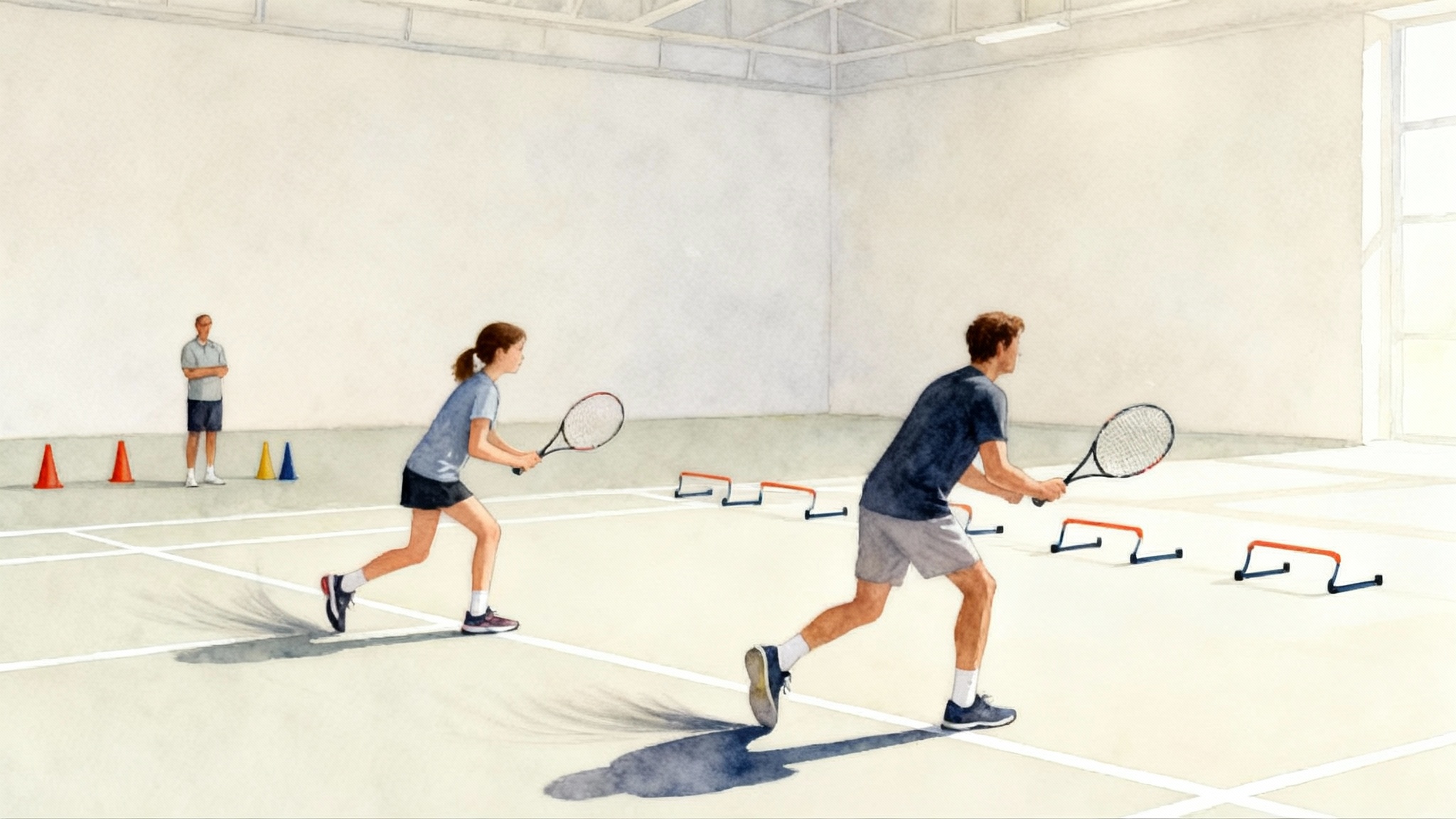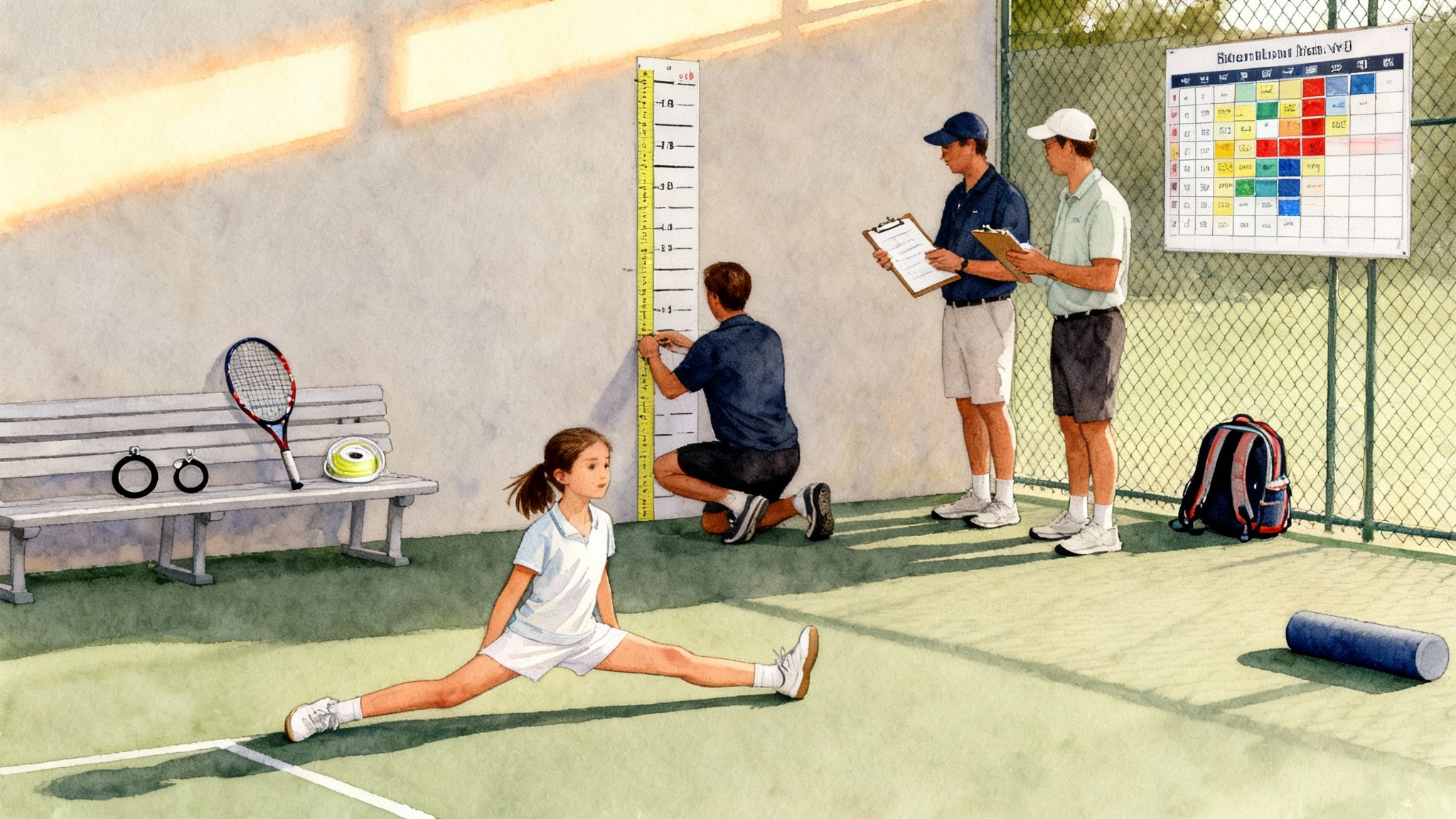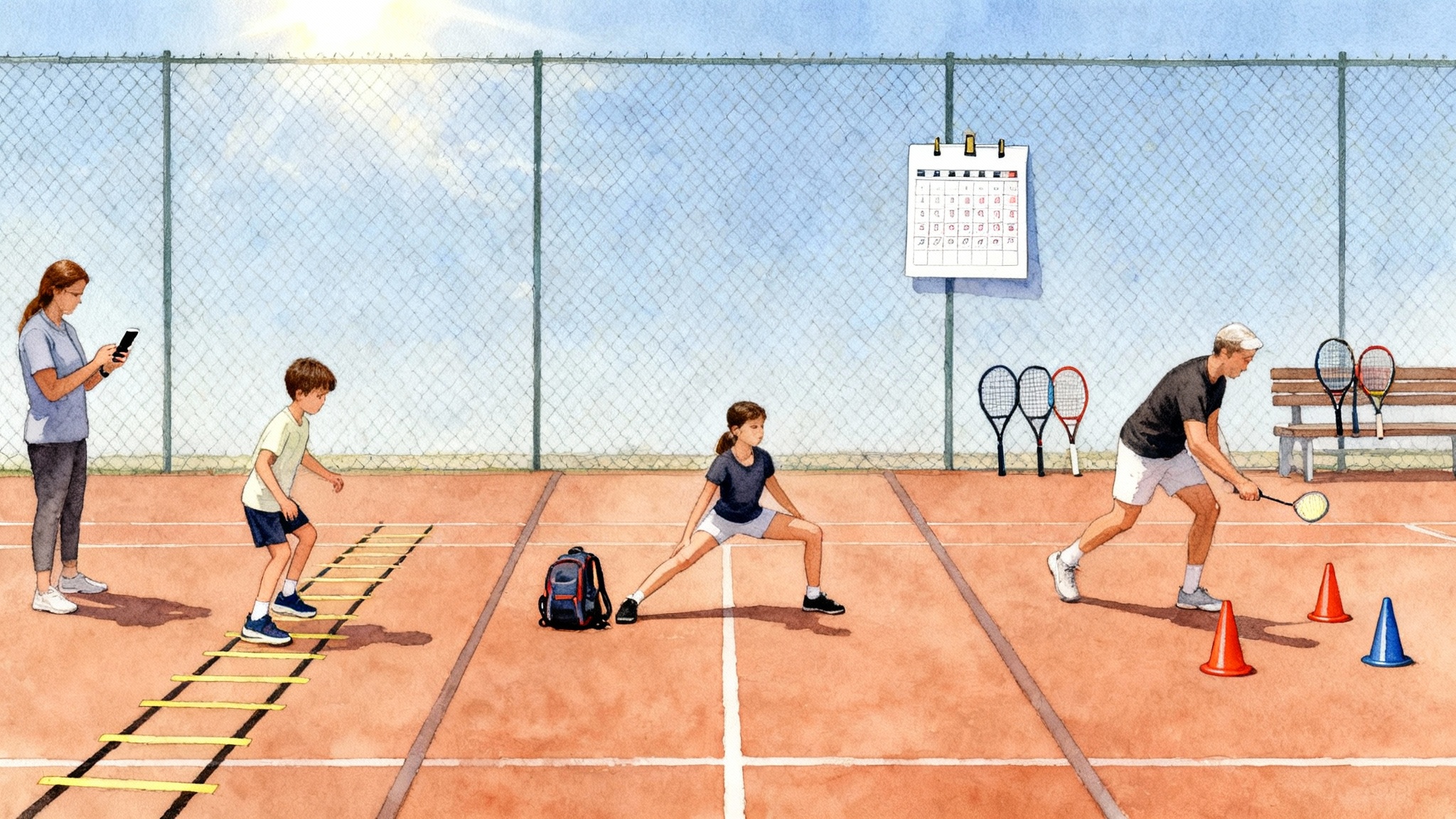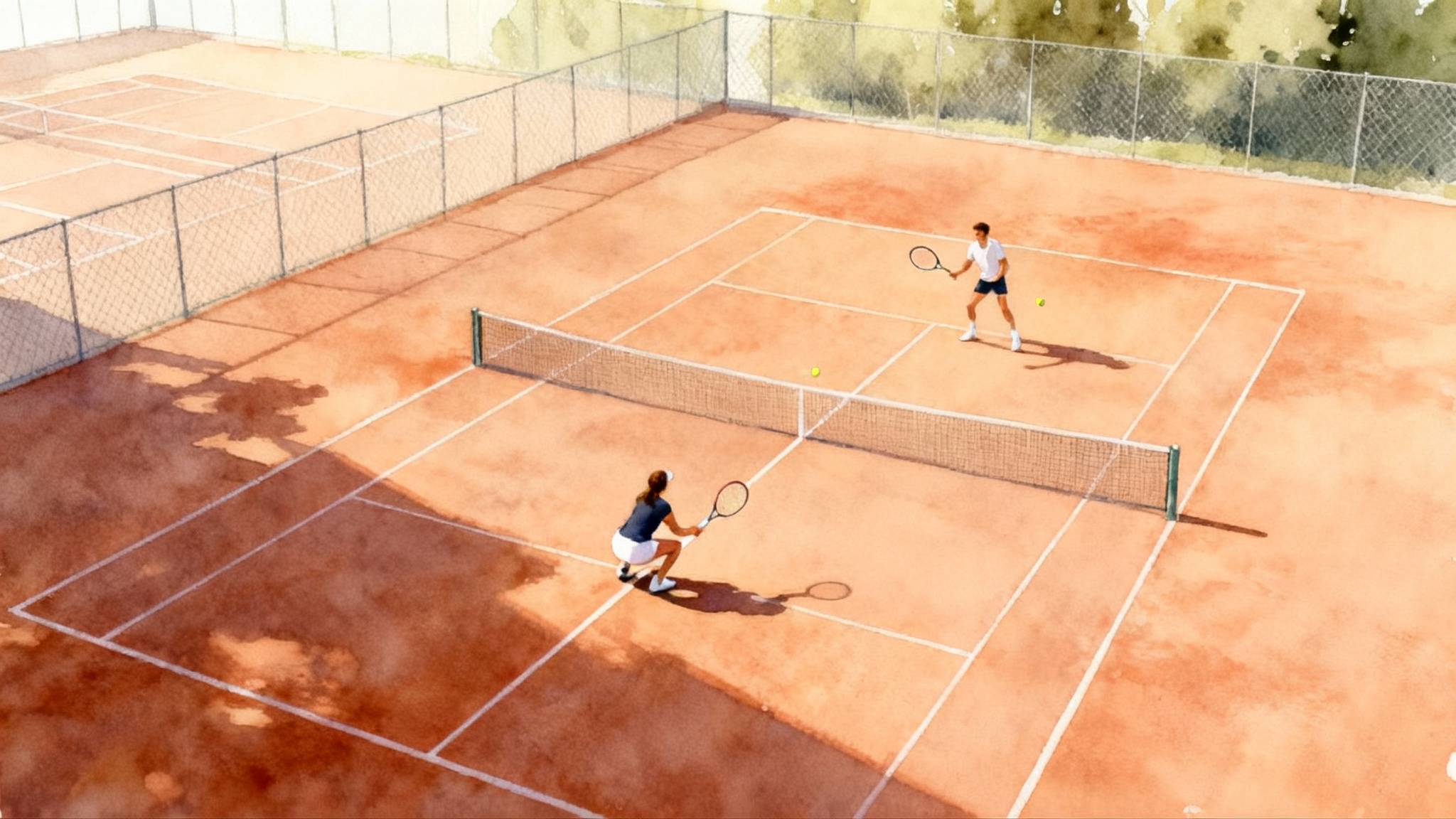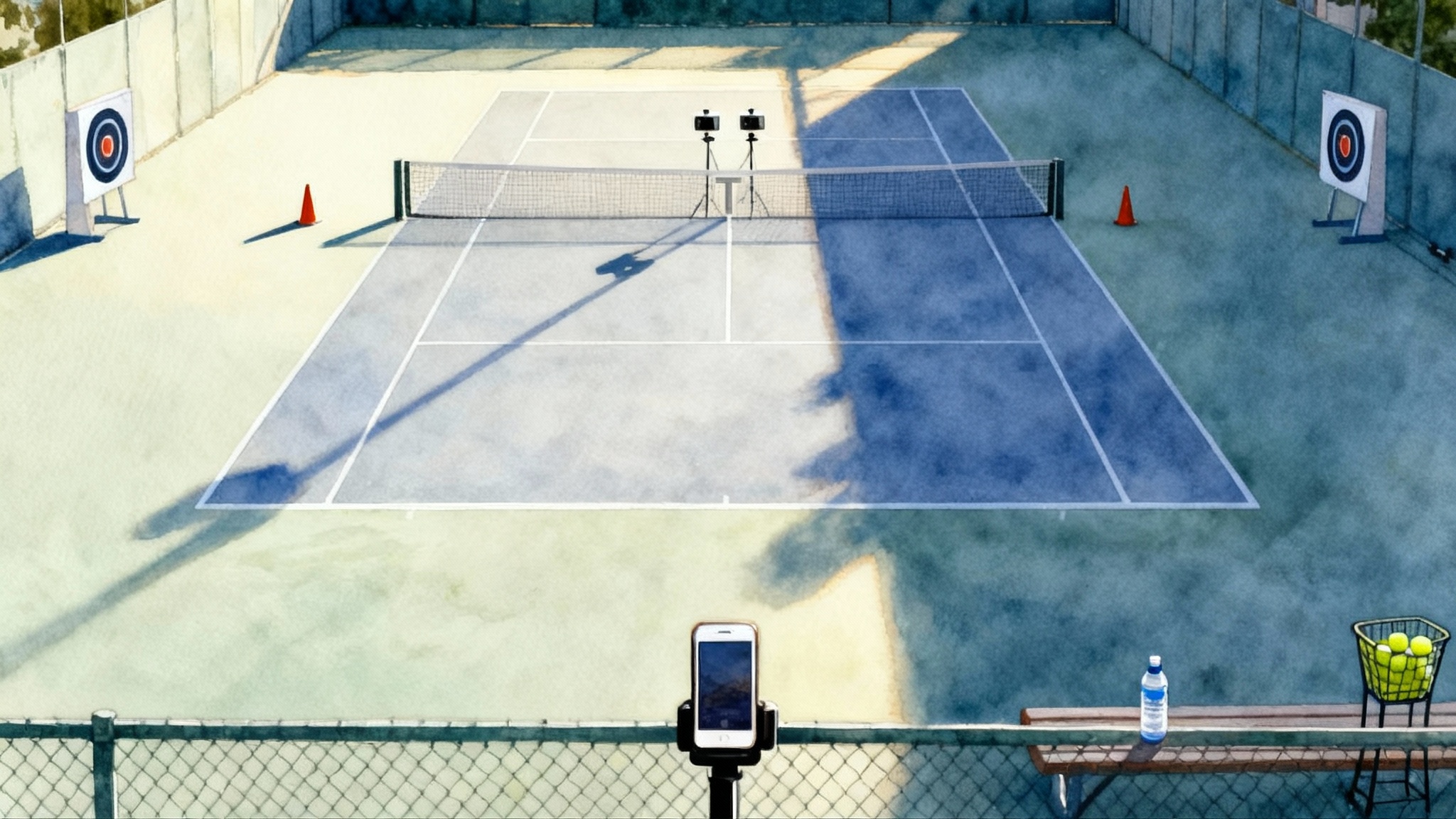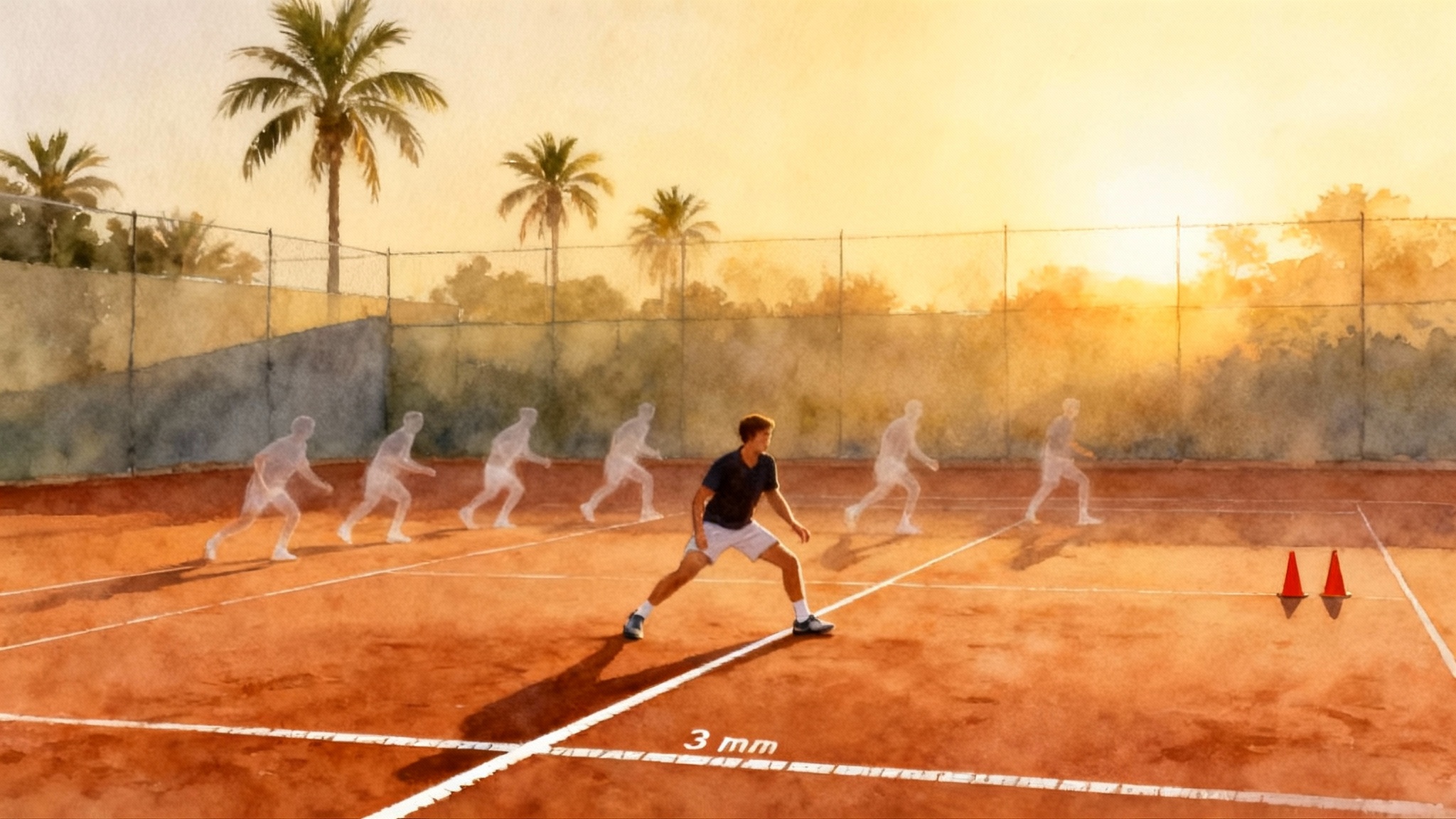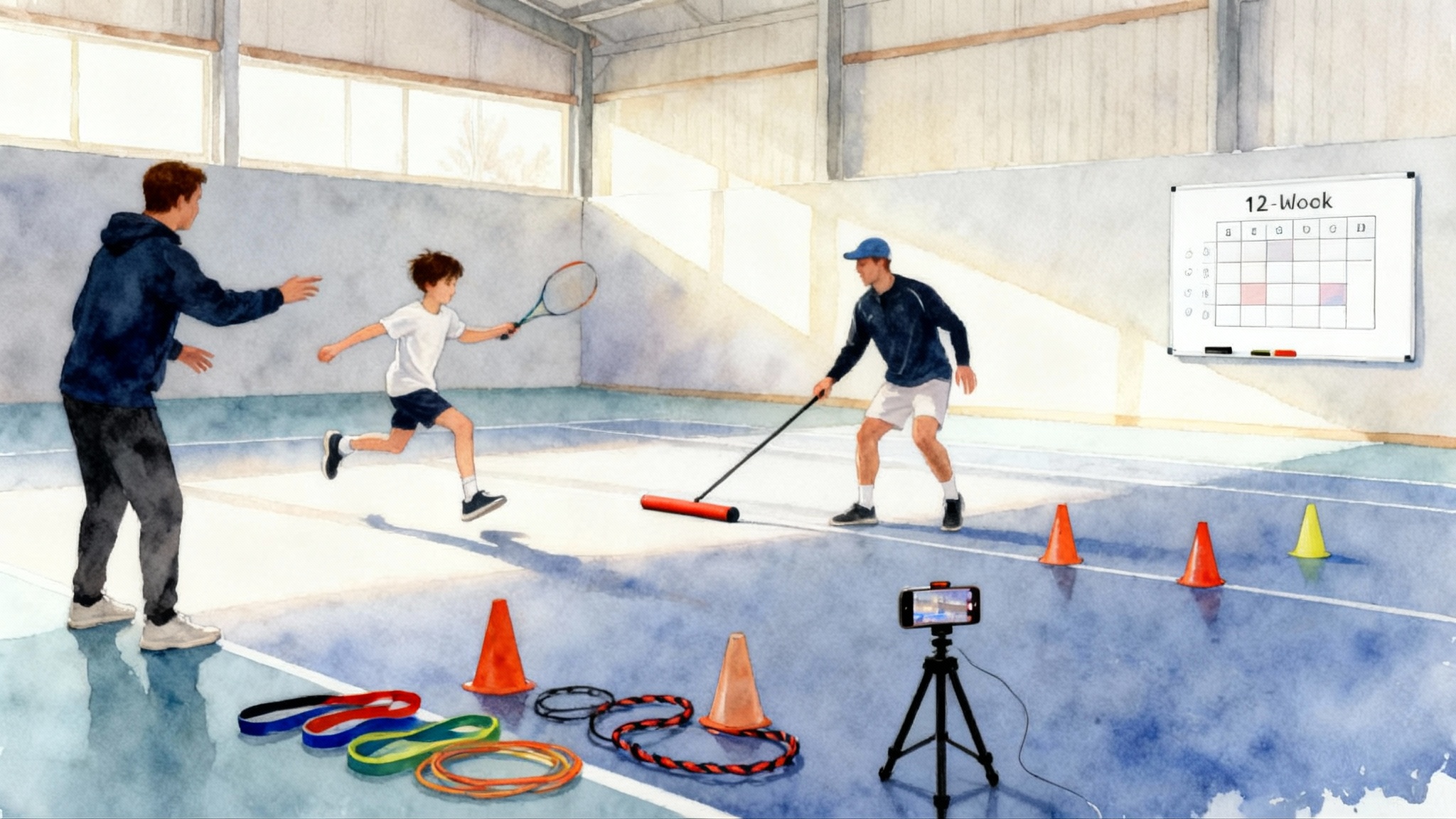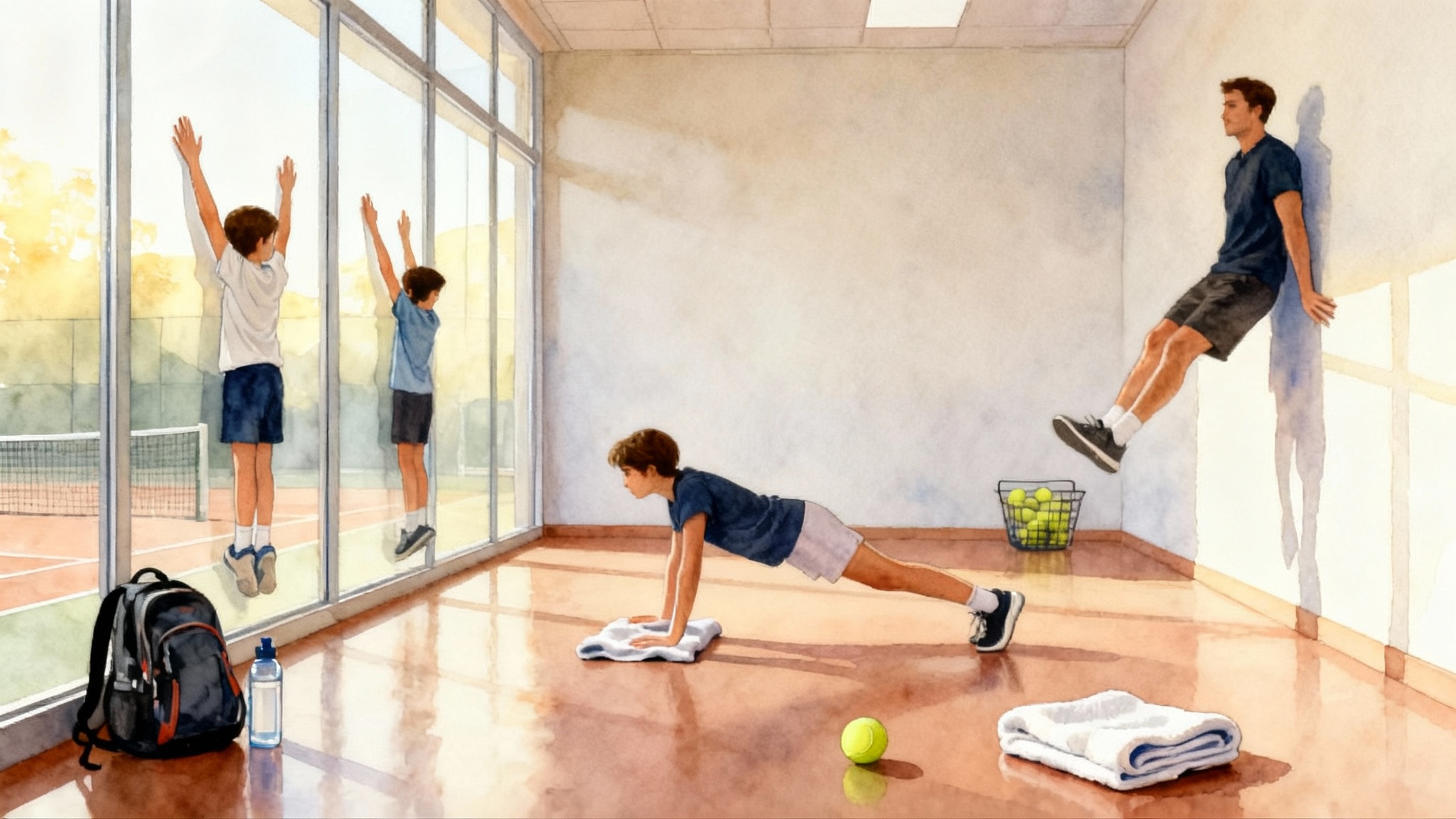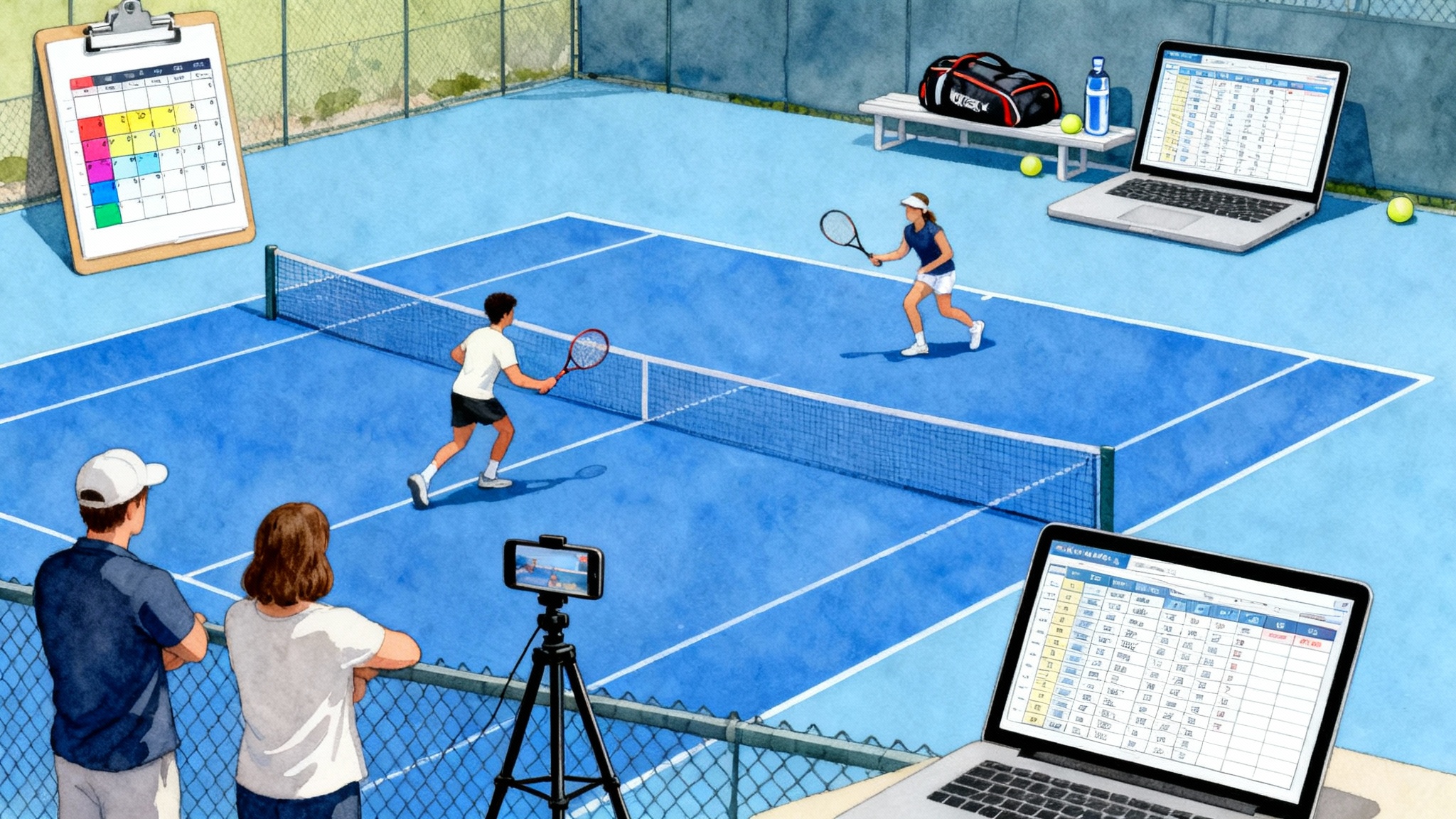Smart 2025–26 Tennis Calendars: UTR, USTA and ITF Pathways
A practical 12‑month planner for juniors and adult comeback players. Learn how to stack UTR reps, add USTA Level 6→3 and ITF J30→J100 blocks, budget travel around school, and plug in academy tune‑ups.
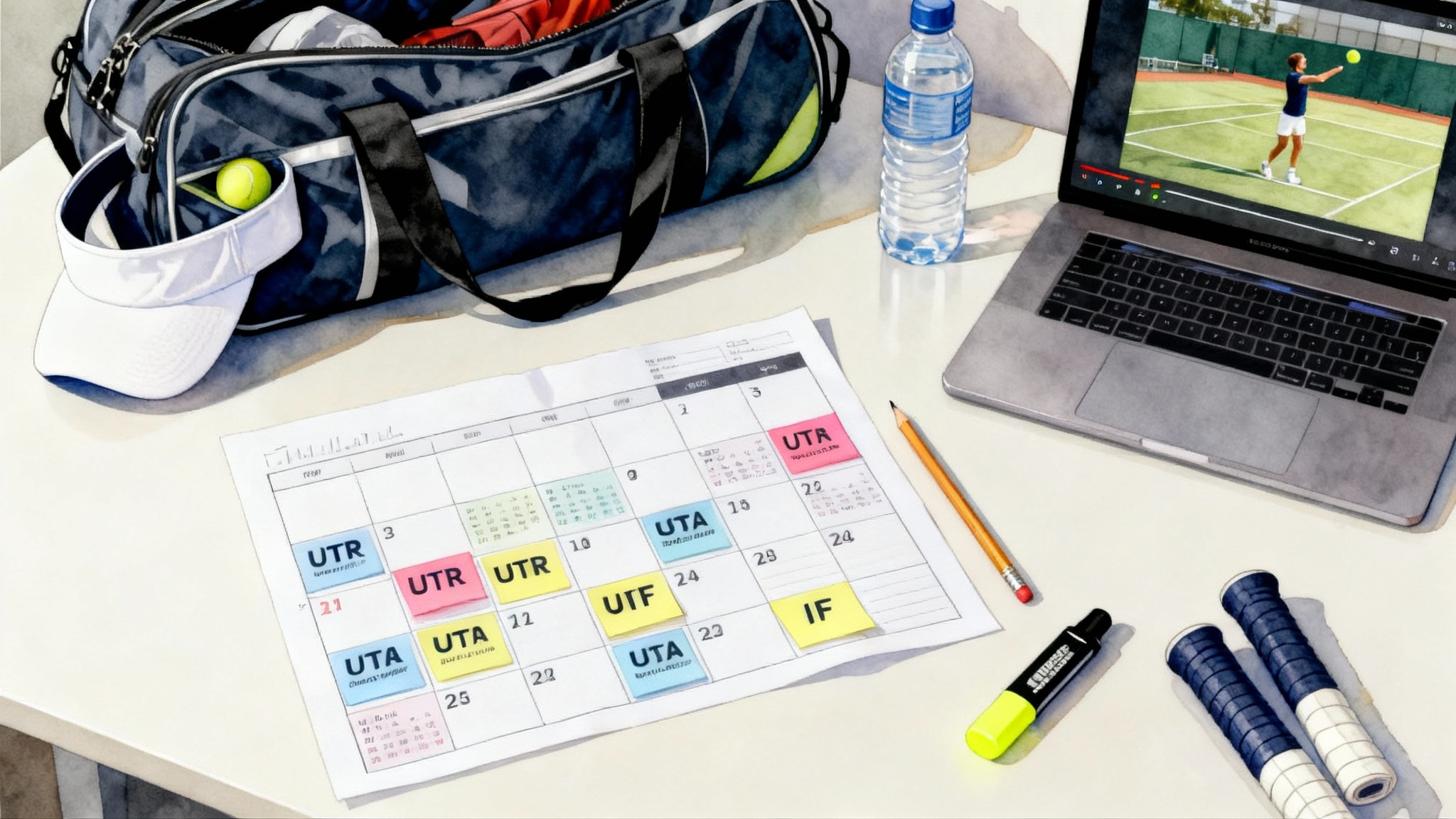
Why a planned calendar beats random entries
Building a tournament year is like building a semester schedule. If you dump every class onto one day, you burn out and learn less. If you spread the right classes into a clear sequence, you retain more and improve faster. Tennis works the same way. A smart calendar balances match repetitions, quality of opposition, recovery windows, school commitments, and cost. It also pushes the level just enough to stretch a player without sending them on expensive wild goose chases.
Below is a step‑by‑step planner with three sample 12‑month schedules. We will show how to use local Universal Tennis events for match reps, when to add United States Tennis Association Levels 6 through 3, when to step into International Tennis Federation Junior J30 through J100 blocks, and where an academy program can tie it together with monthly match‑play and pre‑tournament tune‑ups.
The three ladders you are climbing
Think of competition as three ladders leaning against the same wall.
- Universal Tennis Rating ladder: flexible local events, singles and sometimes team formats, easy to enter, frequent. Ideal for repetitions, confidence, and live match problem solving.
- United States Tennis Association ladder: Levels 7 to 1, with Level 7 and 6 as entry points, Level 5 and 4 for strong sectional play, and Level 3 for high sectional or inter‑section competition. See the framework on the official page, which lays out how points and levels work in plain language in USTA junior levels explained.
- International Tennis Federation junior ladder: global calendar with J30, J60, J100, and higher tiers. J30 and J60 are realistic first steps for strong sectional players. The structure is summarized under ITF junior tournament grades.
You will not climb all three ladders at once. You will prioritize one while borrowing rungs from the others to create the right amount of stress, travel, and learning.
Planning principles for 2025–26
Use these rules to anchor decisions before you pick events.
-
Plan in 10 to 12 week cycles. Each cycle has three phases: base, compete, recover. The base is three to five weeks of training plus local UTR events. Compete is a three to five week run of USTA or ITF events. Recover is one easier week with reduced volume and one match‑play day to keep the feel.
-
Budget around school terms. In the United States, August to mid‑November and January to late April are school heavy. Use those for local UTR and short drives to USTA events. Use Thanksgiving week, winter break, spring break, and June to August for your biggest competitive blocks.
-
Protect weekly rhythm. Two quality hitting days, two fitness focused days, one match‑play day, one open skill day, and one rest day is a simple cadence. When competing, reduce the fitness load and keep reflexes sharp with short, high‑speed sessions. For a simple template, see the in‑season tennis strength plan.
-
Travel with a threshold. If an event requires flights or more than two nights in hotels, it should deliver either higher level points, first exposure to a new tier, or a college‑relevant experience for older juniors. If it does not check one of those boxes, find a closer option.
-
Use UTR for reps and experiments. Play new patterns, serve targets, or return positions at UTR events. Save USTA and ITF events for the versions you trust under pressure.
-
Track two metrics only. Match count and quality. You want 35 to 55 singles matches in a year for 10 to 12 year olds, 45 to 65 for competitive 13 to 16 players, and 25 to 40 for adult comeback players. For quality, note how many matches were decided by two or fewer games per set. Those are the learning gold mine.
Persona 1: Ages 10–12, Orange or Green ball
Goal: build a wide skill base, love for competition, and smooth transitions to full court. The year should feel local, short‑drive, and fun. Most events should be UTR or USTA Level 7 to 6, with a few Level 5 tests by the end of the year if ready.
Training anchors: two technical sessions, one athletic development session, one open play session, and one match‑play day each week. Use short scoring formats often.
Sample 12‑month plan (July to June)
- July: 2 local UTR events, 1 USTA Level 7. Weekly match‑play at the academy. Focus on serve toss, recovery steps, and split step.
- August: 1 UTR weekend, 1 Level 7. Heat management basics, hydration plan, and light backpack setup. One recovery weekend.
- September: 2 UTR events. Add first Level 6 if ready. Keep school nights calm. One technical tune‑up clinic before event.
- October: 1 Level 6, 1 UTR. Work on serve plus one pattern. Parents practice efficient warm‑up and arrival timing.
- November: 1 UTR, optional Level 6. Recovery mini‑block over Thanksgiving. Outdoor to indoor transition footwork.
- December: 2 UTR holiday events with short scoring. Family travel week off. Light skills at home with foam balls.
- January: 1 Level 6, 1 UTR. Emphasize split step timing off opponent contact. One strength‑for‑kids circuit.
- February: 2 UTR events. Serve targets with cones. Keep it local and short.
- March: 1 Level 6, 1 UTR during spring break. Add first longer match format if ready.
- April: 2 UTR events. Focus on return position and first ball neutralizing.
- May: 1 Level 6, 1 UTR. Short trip test within driving distance to practice travel routine.
- June: 1 Level 6 or 5 if coach agrees. Fun team UTR event. Celebrate the year and pick three summer goals.
Why this works: most matches are local and frequent, the scoring formats fit attention and growth, and the Level 6 events give a gentle taste of higher structure without long travel days. One or two Level 5 tests in late spring can signal readiness to move up.
Where the academy fits: schedule a monthly match‑play block that mirrors tournament scoring, and add a 90‑minute pre‑tournament tune‑up the day before the Level 6. The Life Time Tennis Academy programs can host Friday match‑play plus a Sunday tune‑up so the first balls of the tournament feel familiar.
Persona 2: Ages 13–16, performance track
Goal: earn strong sectional results, move from USTA Level 6 and 5 into Level 4 and 3, and sample ITF J30 to J60 events in windows that do not crush school work. The year alternates between local UTR volume and pointed competitive blocks. Parents should expect two or three travel weeks if the player is targeting college visibility.
Training anchors: three on‑court sessions with specific patterns, two strength and speed sessions, one academy match‑play day, one full rest day. Use video twice per cycle to review patterns under stress — the tennis video analysis playbook makes this simple with phone or smart‑court tools.
Sample 12‑month plan (July to June)
- July: 1 Level 4 or strong Level 5 in‑section; 1 UTR weekend; 1 Level 6 as a confidence builder. Heat management and cramping prevention rehearsed in practice.
- August: 2 UTR events and one Level 5. Start school with a lighter weekend load. Add short, sharp fitness and serve focus.
- September: 1 Level 4 or 5 within driving distance, 1 UTR. Five match minimum for the month to keep feel while protecting school load.
- October: Level 4 or 3 target event. Reduce fitness load 7 days prior. Add one academy tune‑up two days before first ball.
- November: 1 UTR and 1 Level 5. Thanksgiving week is a mini camp: three practice days plus one match‑day ladder.
- December: Winter travel block of 7 to 10 days. Option A: two Level 4s back to back. Option B: first ITF J30 plus a Level 4. Keep entries realistic. Do not chase both singles and doubles points if it adds fatigue.
- January: Recovery and rebuild. Two UTR events for reps. One video review of serve plus one pattern.
- February: 1 Level 4 and 1 UTR. If the December block was ITF, keep February local to stabilize school grades.
- March: Spring break travel block. Option A: Level 3 plus Level 4. Option B: two ITF J30 or a J60 if the coach signs off. Book travel early and plan one full rest day mid‑block.
- April: 1 UTR and optional Level 5. Protect exam prep by trimming weekday load.
- May: 1 Level 4, 1 UTR. Add doubles for tactical growth if volume is under control.
- June: Two week competitive block. Option A: Level 3 and Level 4. Option B: ITF J30 and J60. Include one academy prep day before each event.
When to add ITF J30 to J100: a player who consistently competes in the second weekend of Level 4 events is ready for J30 tests. If Level 3 results are solid, a J60 becomes sensible. Do not chase J100 travel unless the player is winning matches at Level 3. See the ITF structure noted above for context.
How to pace the school year: use two travel windows, one in late December and one across spring break or early June. Keep October and February as shorter drives or local events. If grades dip, shift one Level 4 to UTR match‑play for four weeks rather than forcing a stressed trip.
Budget notes: for a two‑tournament drive trip, plan fuel and hotels at a simple rule of thumb. Two nights per event, 1.5 rooms if sharing, and two restaurant meals per day. Flights only when the event adds a clear value like Level 3 seeding or an ITF points start.
Where the academy fits: Life Time Tennis Academy can anchor a weekly match‑play ladder, provide a one‑hour serve and return tune‑up the day before travel, and run a mid‑block recovery session between back‑to‑back events. The academy can also film two pressure sets per cycle and build a highlight clip for scholarship conversations.
Persona 3: Adult 3.0–4.0 comeback track
Goal: return to match fitness, build a bank of competitive reps, and peak for one target event or league playoff. This calendar values consistency over volume. You want monthly UTR events, a small run of USTA NTRP tournaments, and one or two short travel weekends only if the local scene is thin.
Training anchors: two hitting sessions, one strength and mobility session, one match‑play day, one rest day. Keep a simple recovery rhythm: sleep, hydration, and two ten‑minute mobility blocks per day.
Sample 12‑month plan (July to June)
- July: 1 local UTR event and a USTA NTRP tournament within an hour. Baseline fitness test: a timed 1.5 mile, 10 pushups, 10 split step hops every point in practice.
- August: 1 UTR and one league match week. Light travel. Add doubles to sharpen returns and net instincts.
- September: 1 UTR and optional NTRP singles. One full rest weekend.
- October: 1 UTR and a short drive NTRP tournament. Reduce gym load in the tournament week and add shoulder care.
- November: 1 UTR or team event. Family schedule often tight, so target a single high‑quality outing.
- December: Recovery month with 1 social UTR and movement work. Practice tie‑breakers to keep the feel.
- January: 1 UTR and one NTRP tournament. Serve targets with 60 total balls per practice.
- February: 1 UTR. Use video for two sets to spot footwork shortcuts.
- March: 1 UTR and a league weekend. Short sprint work to freshen legs.
- April: 1 UTR and optional NTRP. If work trips pile up, bank one extra practice set instead.
- May: 1 UTR or team playoff run. Prehab focus for knees and calves.
- June: Peak event. Reduce gym volume, keep speed, and book an academy tune‑up two days before play.
Where the academy fits: a monthly match‑play block keeps you honest. A pre‑tournament tune‑up with serve sequencing and return depth targets can turn a tight breaker in your favor. Adults benefit from a clear plan that removes decision fatigue.
How to select events in each cycle
Use a simple 3 by 3 grid at the start of every cycle.
- Week 1 to 4: two UTR events. One is singles only. One includes doubles to practice formation and return patterns. Training is full volume.
- Week 5 to 8: one or two USTA events at the right level. If 10–12, mostly Level 6. If 13–16, Level 5 to 4 with a Level 3 only when recent match data supports it. Adults choose one NTRP per month or one league weekend.
- Week 9 to 10 or 12: recovery and skills. One UTR with short sets and a second day of fun sets. Fitness drops by 30 percent while you protect speed.
Check your progress at the end of each cycle. If you won fewer than 40 percent of matches in the compete phase, you likely aimed too high. If you won more than 70 percent, schedule a test one level up next cycle. Adjust, do not overhaul.
Travel, cost, and recovery by season
- Late summer to early fall: warm weather, lower hotel prices. Good for two event blocks within driving distance. Hydrate and use a sun plan. Pack extra grips and salt tabs.
- Late fall: school intensifies. Shift to one event per month plus UTR. Focus on serve reliability and return depth.
- Winter: use the holidays for an intentional block. Book early to avoid last minute prices. Cold weather means longer warm‑ups and more shoulder care.
- Spring: grades and standardized tests matter. Keep most events within a two hour drive. Use spring break for one block.
- Early summer: strongest window for a stretch goal. Two events in two weeks with a mid‑block recovery day. Build in one full week off tennis in late June or early July. The body and mind need it.
A simple budget template per event weekend
- Entry fee: plan for entry plus potential doubles add‑on.
- Transit: fuel or flights. If flying, favor nonstop to reduce stress and lost practice time.
- Hotel: two nights per event is typical. Families can share to cut cost, but protect sleep.
- Food: two meals out per day plus snacks. Carry fruit, nuts, and hydration mix.
- Academy prep: one tune‑up session. Worth it when the event tier is higher than usual.
Where an academy like Life Time Tennis Academy fits
An academy can be your calendar engine. Here is how to integrate it in practical terms.
- Monthly match‑play blocks: a fixed Friday or Saturday ladder with umpired scoring. This simulates the feel of the first round and gives you free analytics like percentage of returns in play.
- Pre‑tournament tune‑ups: 24 to 48 hours before play, book a 60 to 90 minute session with priority on serve patterns, first four balls, and a 15 minute tiebreak. Carry a paper card with two to three cues you will use in matches.
- Recovery and strength: post‑event Monday should be movement, mobility, and light hitting. Strength returns midweek. The academy can build a calendar view that blocks recovery before you even enter events.
- Video and review: film one pressure set each cycle. Review the first four shots per point. Build a library of two or three patterns that score for you.
- Communication: agree on the event tier before entry. If the player is unwell or school load spikes, the academy helps pivot to local UTR without losing momentum.
Sample week templates
Training week in a non‑tournament phase
- Monday: hitting with patterns for 90 minutes, strength and mobility for 45 minutes.
- Tuesday: serve and return for 60 minutes, speed work for 20 minutes.
- Wednesday: academy match‑play day with full scoring.
- Thursday: skills and problem solving with constraints for 75 minutes.
- Friday: light hit for 45 minutes or full rest if weekend is busy.
- Saturday: UTR event or themed sets.
- Sunday: rest and mobility.
Tournament week
- Monday: short, high‑speed hit and mobility.
- Tuesday: serve plus one, return plus two, no heavy legs.
- Wednesday: academy tune‑up with tiebreakers.
- Thursday: travel and short hit.
- Friday to Sunday: event days with a cool down walk after matches.
Common mistakes and how to avoid them
- Chasing points with poor readiness: if your player has not won local UTR matches by small margins, a Level 3 will not fix that. Use three to four weeks to improve serve targets and return depth before entering the higher tier.
- Overloading during exams: swap one event for a UTR ladder two weeks before exams. Protect sleep.
- No recovery week: every 10 to 12 weeks, cut volume and add one fun match‑play day. Players who never rest progress more slowly because the next cycle starts tired.
- Playing scared: use UTR events to practice new patterns under low pressure. Then make those patterns your default in USTA events. Confidence is just familiarity in disguise.
Your next three actions
- Map school terms and family travel windows from July through next June. Circle two blocks for higher tier events.
- Pick a weekly academy match‑play ladder and a pre‑tournament tune‑up slot that you can repeat all year.
- Build the first 10 to 12 week cycle with two UTR events, one to two USTA events, and one recovery week. Review the two metrics that matter at the end: total matches and number of tight sets.
Conclusion
A good tennis year is not about playing everywhere. It is about playing the right events at the right time, then learning fast between them. Use UTR for repetitions and experiments. Use USTA Levels 6 through 3 for structured tests. Add ITF J30 through J60 blocks when performance shows you are ready and the calendar says you can focus. Let an academy handle your rhythm with monthly match‑play and tune‑ups so each tournament starts with a calm first ball. Do this across a few cycles, keep your budget honest, and you will see the quiet signs of progress that matter most. More tight sets won. Fewer nerves in first rounds. A player who knows when to push and when to recover. That is a smart 2025–26 calendar.
